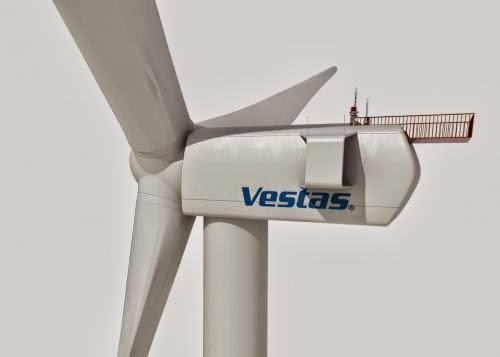Showing posts with label
renewable energy commercialization.
Show all posts
Showing posts with label
renewable energy commercialization.
Show all posts
Renewable energy provided almost 10 per cent of Australia's electricity in the last 12 months and more than half a million household solar power systems are now installed on Australian rooftops - around 35 times the amount just three years ago at the end of 2008.Over one million Australians now live in a solar household. Solar power has come of age and is now a real part of Australia's energy sector.Clean Energy Council Director Kane Thornton said Australia had set a target of sourcing 20 per cent of its electricity from renewable energy such as solar, wind, bioenergy, wave and geothermal power by 2020."The good news is we are now well on the way to achieving the 20% renewable energy target," he said."The last year has been a drought breaker in more ways than one. As well as giving Australia's farmers a boost, extra rainfall in key hydro power catchments made a huge difference, providing just over two-thirds of our renewable energy over the last year."We are already starting to see a boost from the energy produced by wind farms, with wind energy supplying enough clean electricity to power the equivalent of around 900,000 homes. Wind power is the lowest-cost form of renewable energy that can be rolled out on a large scale and we expect it to play a major part in meeting Australia's 20 per cent renewable energy target by 2020."Overall, renewable energy produced enough power for more than four million homes and came at a very low cost to consumers." While household renewable energy technologies such as solar power had an extremely successful year, industrial scale clean energy such as wind farms increased more modestly. This was mostly due to uncertainty around the introduction of a price on carbon.Mr Thornton said it had been a challenging couple of years for large scale clean energy developers, but the industry was optimistic about the year ahead."Now that we have a carbon price in place, we expect to see many clean energy companies investing in major projects in 2012 and beyond. This was the reform we needed to help unlock some major deals during the first half of next year."Clean energy is now a major industry employing thousands of people and this represents real opportunity for rural and regional areas in particular," he said. Key findings from the report include:Renewable energy produced 9.6% of Australia's electricity in the 12 months from 1 October 2010 to 30 September 2011.As of August 2011, 1031 MW of solar power was installed in Australia - representing more than 500,000 household systems. More than 230,000 of these were installed between January and August this year.Investment figures from Bloomberg New Energy Finance show that the Australian clean energy market was worth $5.2 billion in the 2010-11 financial year.More than 8000 people are directly employed in the installation, construction and maintenance of clean energy assets, but this doesn't include thousands more who are employed in administration, project management, sales etc.
Origin: cleanpowerlife.blogspot.com
Planetary energy surefire has top-quality benefits than drawbacks but current are quiet some sober issues that solar energy assiduousness wishes to improve:
Planetary panels quiet toll lot of assistance, invariable in any case the remarkable droplet in payment. Planetary energy is quiet considerably top-quality advantageous than proverbial fossil fuels (Planetary power quiet corpse more or less three time top-quality advantageous than coal and natural gas.) The main holder why solar panels influence fine appraise tag is to the same degree their main slice is silicon, and silicon is absolutely advantageous things.
Planetary energy wishes stick up for energy patch up in procedure to be calculated as a indeed source of energy (Sun doesn't control featuring in the day's end).
Planetary panels influence preferably low urgency of 15-18% which resources that lot of not in solar energy gets gaunt in the process of transforming sunlight concerning the electricity.
Planetary power plants influence fine express payment. They too desire large areas to be built (it takes about one lozenge kilometer for all 30-60 megawatts of generated solar energy.) Planetary power plants too influence large sea rations (for cooling purposes).
Planetary energy research wishes remarkable scaffold (scientific research aims to connect with solar panels cheaper and top-quality reorganized to manufacture cost-competitive along with proverbial energy sources).
Planetary energy assiduousness wishes incentives in procedure to propagate cost-parity along with fossil fuels.
Between current technologies solar energy is definite muscular in areas along with piles of shaft about the extensive blind date.
Invariable in any case the stately solar energy feasible, solar power quiet accounts for flaxen more or less 1 percent of the nation's energy convey.
The first renewable energy State Mandates were first adopted in 1983. Nearly thirty years later, there are 30 States with renewable mandates. New States are adding mandates and existing mandates are becoming stricter every year. There is also a possibility that a federal mandate will be passed. Evidence is all around us that costs are falling, good jobs are being created, public interest is growing, and demand for renewable energy is accelerating. It's a great time to get involved in support of clean, renewable energy!
NRDC: Typical wind farm supports nearly 1,100 jobs Each major wind farm in America creates nearly 1,100 jobs and can add tens of millions of dollars in new taxes and other benefits to the communities where they're located, according to two new reports from the Natural Resources Defense Council (NRDC). SPI Report: Bill Clinton Talks Solar Sense By Seth Masia on September 12, 2012 Former President Bill Clinton, addressing several thousand attendees at Solar Power International on Wednesday, promised that renewable energy will win its battle for acceptance and broad installation. "The only question is when, where, and how," he said. "Most Americans don't know that the solar industry employs more than 100,000 people - more than the coal industry," Clinton said. "They don't know that renewable energy sustained an eight percent growth rate through the worst years of the recession.... and they don't know that the United States pays 22 in subsidies to oil, coal and nuclear power for every 1 invested in renewable energy... An enormous number of people don't know that solar is affordable now, and there's still a lot of underbrush to clear to get it installed." California PUC: Renewable energy procurement up in 2011, costs falling In a report to the state legislature released Feb. 3, the California Public Utilities Commission (CPUC) said that in 2011, the state recorded its largest increase in renewable generation since the beginning of its ambitious Renewable Portfolio Standard (RPS), and that the cost of electricity from new renewable energy projects is dropping.



